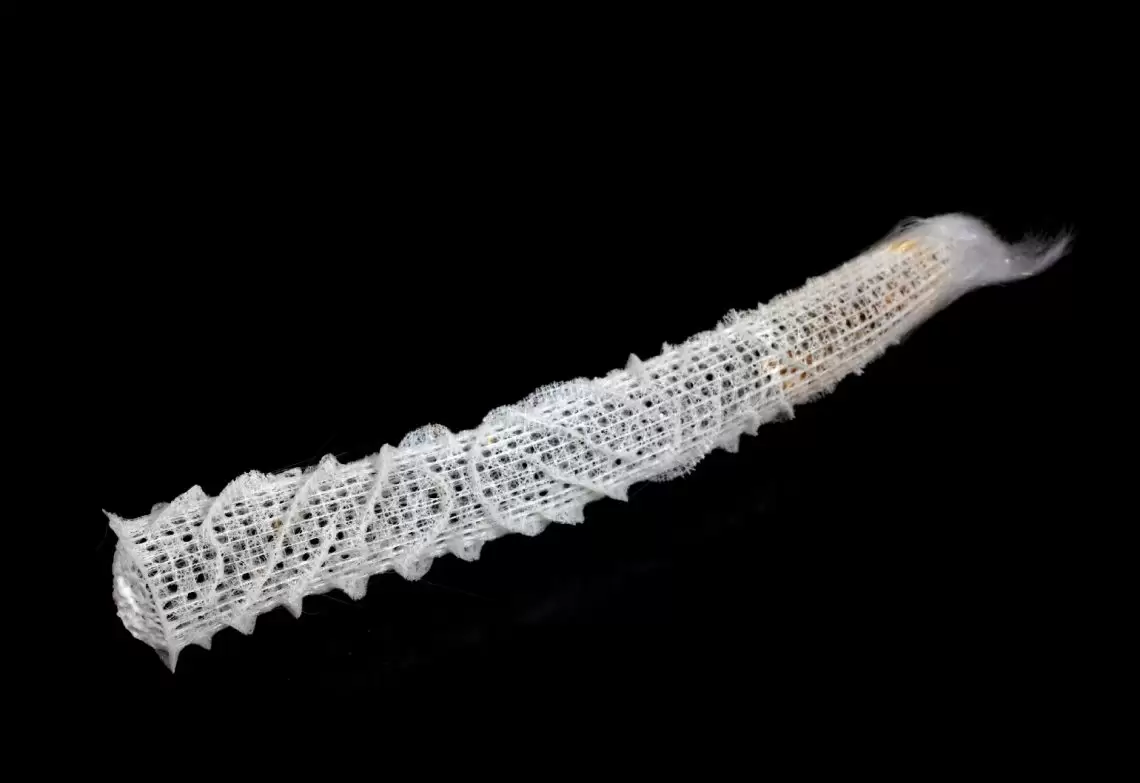The skeletal structure of deep-sea sponges could shape how we construct buildings and infrastructure, according to new research.
An international group of engineers and scientists simulated the living conditions of the Venus flower basket sponge, which lives deep in the Pacific Ocean.
The group, which includes researchers from the University of Western Australia (UWA), Harvard University, Tor Vergata University of Rome, New York University, University of Tuscia and the Italian Institute of Technology, recently published its findings in Nature.
It’s difficult to study live Venus flower basket sponges in their habitat, so the team created computer simulations to understand how the delicate looking creature survives the pressure of the deep sea.
What it comes down to is its beautiful and unique skeletal structure.
Bones of glass
The skeleton of the Venus flower basket sponge is made of silica, making it flexible and extremely resilient.
“This structure allows it to reduce the pressure from the water, which is very strong at the bottom of the ocean,” Dr Giovanni Polverino, biologist at the University of Western Australia’s Centre for Evolutionary Biology and co-author of the paper, told create.
“It uses this to actually slow down the flow of water inside the cavity of the sponge.”
The sponge’s skeleton follows a highly regular and hierarchical cylindrical lattice, which the team recreated and then tested against approximately 100 billion virtual seawater particles moving in and around the structure.
“Using unprecedented computer analysis, we were able to see something that would otherwise have been impossible to see,” Polverino said. “The simulation has been the key.”
The team used the Marconi100 exascale-class computer at the CINECA high performance computing centre in Italy to run the simulations. It also used specially designed software that ran simulations based on the Lattice Boltzmann method. This was what allowed it to build and track all the virtual particles.
“The accuracy of the method, combined with access to one of the top supercomputers in the world, made it possible for us to perform levels of computation never attempted before, which shed light on the role of fluid flows in the adaption of living organisms in the abyss,” said co-author Sauro Succi of the Italian Institute of Technology and Harvard University in an interview with ScitechDaily.
This little sponge could make engineers rethink how they build man-made structures from skyscrapers to submarines.
“What we have discovered is how nature deals with high pressure using glass. This is unique, because we don’t currently have architecture that allows glass to be as strong as it is in this sponge.”
Engineers have a precedent of borrowing inspiration from nature, in terms of both structures and animal movement. Polverino hopes this new research could lead to the use of greener construction materials inspired by nature.
“When humans invent things, we kind of try and fail and try again. Natural selection has been doing this for thousands of years. The structure at the end is the result of billions of failures — it’s almost perfection at this point,” he said.
“We should take advantage of this,” he added.
Cross-border, cross-disciplinary team
The Venus flower basket research was led by Harvard engineering associate professor Giacomo Falucci with a team from varying backgrounds.
“It was very collaborative. We had engineers and experts in supercomputers, experts in 3D design and architecture,” said Polverino.
“So this allows us to make a three dimensional design of the sponge in the simulation and then I took care of the functional ecology.”
Studies like this, said Polverino, are a great example of what researchers can achieve when not confined to their discipline.
“It shows the potential of cross disciplinary research. These things don’t happen, unless people look at research with an open mind,” he said.
“Extreme flow simulations reveal skeletal adaptations of deep-sea sponges” was authored by Giacomo Falcucci, Giorgio Amati, Pierluigi Fanelli, Vesselin K. Krastev, Giovanni Polverino, Maurizio Porfiri and Sauro Succi.



